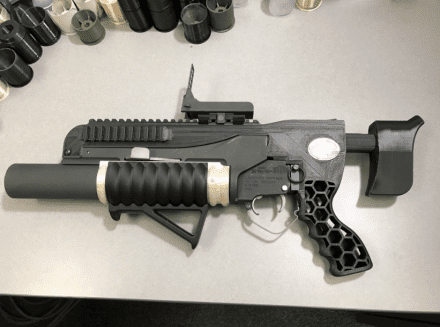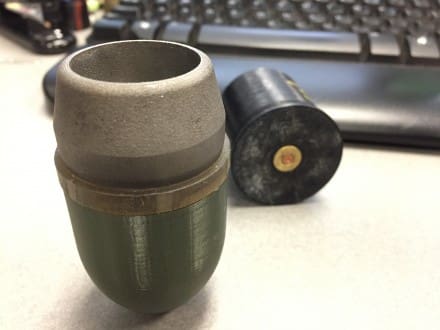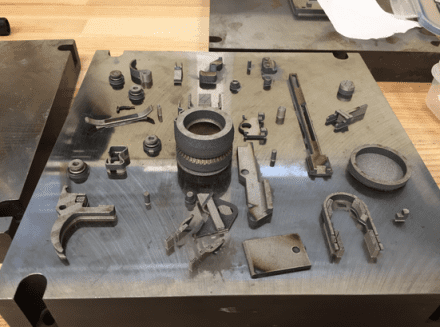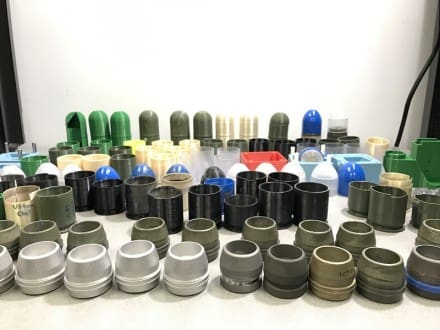The RAMBO or Rapid Additively Manufactured Ballistics Ordnance, is a 3D-printed grenade launcher developed as a collaborative effort between the U.S. Army Research, Development and Engineering Command; the U.S. Army Manufacturing Technology Program; and America Makes, the national accelerator for additive manufacturing and 3-D printing.
The RAMBO, and the 3D-printed round it fires, is the result of a project to “demonstrate the utility of AM [Additive Manufacturing] for the design and production of armament systems.” Rather than try to determine if AM/3D-printing could result in less-expensive or superior manufacturing, the researchers wanted to test the validity of AM/3D-printing technologies in building a weapon system, as well as if the properties of the materials were robust enough for a functioning weapon system.
RAMBO has proven itself initially successful: every component of the launcher, save the springs and fasteners, was developed using AM techniques and processes. The barrel and receiver were fabricated from aluminum processed using a Direct Metal Laser Sintering (DMLS) process, while other components were printed in 4340 alloy steel.
The round, a M781 40mm training round chosen for its simplicity and lack of energetics, was manufactured using Selective Laser Sintering along with other AM processes to print glass-filled nylon cartridge cases and windshields. The projectile body underwent four separate manufacturing approaches, including printing the body in aluminum; steel with a urethane obturating ring; and zinc with a lost-wax casting process. Only the .38 cal cartridge case was not printed, as the capability to print cases isn’t quite yet feasible.
The RAMBO system and its accompanying 3D-printed rounds were test fired at both indoor and outdoor faculties, including the Armament Technology Facility at Picatinny Arsenal, New Jersey, remotely fired for safety purposes, and recorded with high-speed video. 15 test shots showed no degradation of the system, and rounds met muzzle velocities within 5% of a production M781 round fired from a production grenade launcher.
While widespread adoption of AM/3D-printing processes is still a ways out, the RAMBO project has show that there is validity in these processes for developing weapon systems. If anything else, AM/3D-printing can be used to greatly expedite the production of prototypes, which will be of benefit towards better equipping our warfighters.
Original story: asc.army.mil/web/news-alt-amj17-rambos-premiere
Tags: US Army





